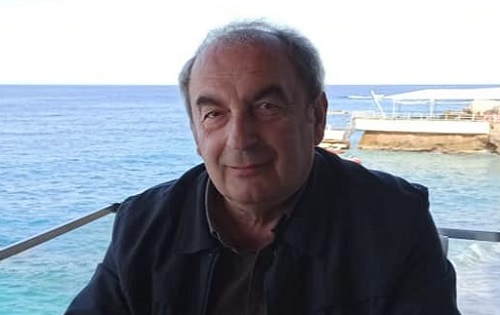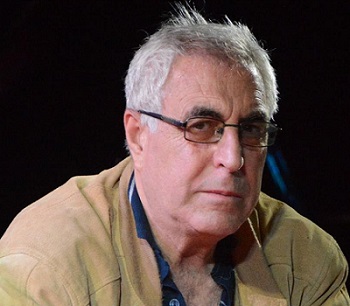History of Albania (1919-1939)
Albania's re-emergence after World War I
Albania's political confusion continued in the wake of World War I. The country lacked a single recognized government, and Albanians feared, with justification, that Italy, Yugoslavia, and Greece would succeed in extinguishing Albania's independence and carve up the country. Italian forces controlled Albanian political activity in the areas they occupied. The Serbs, who largely dictated Yugoslavia's foreign policy after World War I, strove to take over northern Albania, and the Greeks sought to control southern Albania.
A delegation sent by a postwar Albanian National Assembly that met at Durrës in December 1918 defended Albanian interests at the Paris Peace Conference, but the conference denied Albania official representation. The National Assembly, anxious to keep Albania intact, expressed willingness to accept Italian protection and even an Italian prince as a ruler so long as it would mean Albania did not lose territory. Serbian troops conducted actions in Albanian-populated border areas, while Albanian guerrillas operated in both Serbia and Montenegro.
In January 1920, at the Paris Peace Conference, negotiators from France, Britain, and Greece agreed to divide Albania among Yugoslavia, Italy, and Greece as a diplomatic expedient aimed at finding a compromise solution to the territorial conflict between Italy and Yugoslavia. The deal was done behind the Albanians' backs and in the absence of a United States negotiator.
Members of a second Albanian National Assembly held at Lushnjë in January 1920 rejected the partition plan and warned that Albanians would take up arms to defend their country's independence and territorial integrity. The Lushnjë National Assembly appointed a four-man regency to rule the country. A bicameral parliament was also created, in which an elected lower chamber, the Chamber of Deputies (with one deputy for every 12,000 people in Albania and one for the Albanian community in the United States), appointed members of its own ranks to an upper chamber, the Senate. In February 1920, the government moved to Tirana, which became Albania's capital.
One month later, in March 1920, U.S. President Woodrow Wilson intervened to block the Paris agreement. The United States underscored its support for Albania's independence by recognizing an official Albanian representative to Washington, and in December the League of Nations recognized Albania's sovereignty by admitting it as a full member. The country's borders, however, remained unsettled.
Albania's new government campaigned to end Italy's occupation of the country and encouraged peasants to harass Italian forces. In September 1920, after a siege of Italian-occupied Vlorë by Albanian forces, Rome abandoned its claims on Albania under the Treaty of London and withdrew its forces from all of Albania except Sazan Island at the mouth of Vlorë Bay.
Yugoslavia continued to pursue a predatory policy toward Albania, and after Albanian tribesmen clashed with Serb forces occupying the northern part of the country, Yugoslav troops escalated their campaign in the area. Belgrade then backed a disgruntled Geg clan chief, Gjon Markagjoni, who led his Roman Catholic Mirditë tribesmen in a rebellion against the regency and parliament. Markagjoni proclaimed the founding of an independent "Mirditë Republic" based in Prizren, which had fallen into Serbian hands during the First Balkan War.
Finally, in November 1921, Yugoslav troops invaded Albanian territory beyond the areas they were already occupying. The League of Nations dispatched a commission composed of representatives of Britain, France, Italy, and Japan that reaffirmed Albania's 1913 borders. Yugoslavia complained bitterly but had no choice but to withdraw its troops. The so-called Mirditë Republic disappeared.
Social and economic conditions
Extraordinarily undeveloped, the Albania that emerged after World War I was home to something fewer than a million people divided into three major religious groups and two distinct classes: those people who owned land and claimed semifeudal privileges and those who did not. The landowners had always held the principal ruling posts in the country's central and southern regions, but many of them were steeped in the same conservatism that brought decay to the Ottoman Empire. The landowning elite expected that they would continue to enjoy precedence, but the country's peasants were beginning to dispute the landed aristocracy's control.
In northern Albania, the government directly controlled only Shkodër and its environs. The highland clans were suspicious of a constitutional government claiming to legislate in the interests of the country as a whole, and the Roman Catholic Church became the principal link between Tirana and the tribesmen despite the Muslim religious affiliation of most of the population. In many instances, administrative communications were addressed to priests for circulation among their parishioners.
Poor and remote, Albania remained decades behind the other Balkan countries in educational and social development. Only some 13% of the population lived in towns. Illiteracy plagued almost the entire population. About 90 percent of the country's peasants practiced subsistence agriculture, using ancient methods and tools, such as wooden plows. Much of the country's richest farmland lay under water in malaria-infested coastal marshlands. Albania lacked a banking system, a railroad, a modern port, an efficient military, a university, or a modern press. The Albanians had Europe's highest birthrate and infant mortality rate, and life expectancy for men was about 38 years.
The American Red Cross opened schools and hospitals at Durrës and Tirana, and one Red Cross worker founded an Albanian chapter of the Boy Scouts that all boys between twelve and eighteen years old were subsequently required to join by law. Although hundreds of schools opened across the country, in 1938 only 36 percent of all Albanian children of school age were receiving education of any kind.
Despite the meager educational opportunities, literature flourished in Albania between the two world wars. A Franciscan priest, Gjergj Fishta, Albania's greatest poet, dominated the literary scene with his poems on the Albanians' perseverance during their quest for freedom.
Independence also brought changes to religious life in Albania. The ecumenical patriarch of Constantinople recognized the autocephaly of the Albanian Orthodox Church after a meeting of the country's Albanian Orthodox congregations in Berat in August 1922. The most energetic reformers in Albania came from the Orthodox population who wanted to see Albania move quickly away from its Turkish-ruled past, during which Christians made up the underclass.
Albania's conservative Sunni Muslim community broke its last ties with Constantinople in 1923, formally declaring that there had been no caliph since the Prophet Muhammad himself and that Muslim Albanians pledged primary allegiance to their native country. The Muslims also banned polygamy and allowed women to choose whether or not to wear a veil.
Government and politics
Albania's first political parties emerged only after World War I. Even more than in other parts of the Balkans, political parties were evanescent gatherings centered on prominent persons who created temporary alliances to achieve their personal aims. The major conservative party, the Progressive Party, attracted some northern clan chiefs and prominent Muslim landholders of southern Albania whose main platform was firm opposition to any agricultural reform program that would transfer their lands to the peasantry.
The country's biggest landowner, Shefqet Bej Verlaci, led the Progressive Party. The Popular Party's ranks included the reform-minded Orthodox bishop of Durrës, Fan Noli, who was imbued with Western ideas at his alma mater, Harvard University, and had even translated Shakespeare and Ibsen into Albanian[citation needed]. The Popular Party also included Ahmed Zogu, the twenty-four-year-old son of the chief of the Mati, a central Albanian Muslim tribe. The future King Zog drew his support from some northern clans and kept an armed gang in his service[citation needed], but many Geg clan leaders refused to support either main party.
Interwar Albanian governments appeared and disappeared in rapid succession. Between July and December 1921 alone, the premiership changed hands five times. The Popular Party's head, Xhafer Ypi, formed a government in December 1921 with Noli as foreign minister and Zogu as internal affairs minister, but Noli resigned soon after Zogu resorted to repression in an attempt to disarm the lowland Albanians despite the fact that bearing arms was a traditional custom.
When the government's enemies attacked Tirana in early 1922, Zogu stayed in the capital and, with the support of the British ambassador, repulsed the assault. He took over the premiership later in the year and turned his back on the Popular Party by announcing his engagement to the daughter of the Progressive Party leader, Shefqet Verlaci.
Zogu's protégés organized themselves into the Government Party. Noli and other Western-oriented leaders formed the Opposition Party of Democrats, which attracted all of Zogu's many personal enemies, ideological opponents, and people left unrewarded by his political machine. Ideologically, the Democrats included a broad sweep of people who advocated everything from conservative Islam to Noli's dreams of rapid modernization.
Opposition to Zogu was formidable[citation needed]. Orthodox peasants in Albania's southern lowlands loathed Zogu[citation needed] because he supported the Muslim landowners' efforts to block land reform; Shkodër's citizens felt shortchanged because their city did not become Albania's capital, and nationalists were dissatisfied because Zogu's government did not press Albania's claims to Kosovo or speak up more energetically for the rights of the ethnic Albanian minorities in present-day Yugoslavia and Greece.
Zogu's party handily won elections for a National Assembly in early 1924[citation needed]. Zogu soon stepped aside, however, handing over the premiership to Verlaci in the wake of a financial scandal[citation needed] and an assassination attempt by a young radical that left Zogu wounded. The opposition withdrew from the assembly after the leader of a radical youth organization, Avni Rustemi, was murdered in the street outside the parliament building. Noli's supporters blamed the murder on Zogu's Mati clansmen, who continued to practice blood vengeance. After the walkout, discontent mounted, and in June 1924 a peasant-backed insurgency had won control of Tirana. Noli became prime minister, and Zogu fled to Yugoslavia.
Fan Noli, an idealist, rejected demands for new elections on the grounds that Albania needed a "paternal" government. In a manifesto describing his government's program, Noli called for abolishing feudalism, resisting Italian domination, and establishing a Western-style constitutional government. Scaling back the bureaucracy, strengthening local government, assisting peasants, throwing Albania open to foreign investment, and improving the country's bleak transportation, public health, and education facilities filled out the Noli government's overly ambitious agenda. Noli encountered resistance to his program from people who had helped him oust Zogu, and he never attracted the foreign aid necessary to carry out his reform plans. Noli criticized the League of Nations for failing to settle the threat facing Albania on its land borders.
Under Fan Noli, the government set up a special tribunal that passed death sentences, in absentia, on Zogu, Verlaci, and others and confiscated their property. In Yugoslavia Zogu recruited a mercenary army, and Belgrade furnished the Albanian leader with weapons, about 1,000 Yugoslav army regulars, and refugee troops from the Russian Civil War to mount an invasion that the Serbs hoped would bring them disputed areas along the border. After Noli's regime decided to establish diplomatic relations with the Soviet Union, a bitter enemy of the Serbian ruling family, Belgrade began making wild allegations that the Albanian regime was about to embrace Bolshevism. On December 13, 1924, Zogu's Yugoslav-backed army crossed into Albanian territory. By Christmas Eve, Zogu had reclaimed the capital, and Noli and his government had fled to Italy.
Zogu quickly smothered Albania's experiment in parliamentary democracy. Looking after the interests of the large landowners, clan chiefs, and others with a vested interest in maintaining the old order, he undertook no serious reform measures. The parliament quickly adopted a new constitution, proclaimed Albania a republic, and granted Zogu dictatorial powers that allowed him to appoint and dismiss ministers, veto legislation, and name all major administrative personnel and a third of the Senate. On January 31, Zogu was elected president for a seven-year term. Opposition parties and civil liberties disappeared; opponents of the regime were murdered; and the press suffered strict censorship. Zogu ruled Albania using four military governors responsible to him alone. He appointed clan chieftains as reserve army officers who were kept on call to protect the regime against domestic or foreign threats.
Italian penetration
In return for aiding Zogu's invasion, Belgrade expected repayment in the form of territory and influence in Tirana. It is certain that Zogu promised Belgrade frontier concessions before the invasion, but once in power the Albanian leader continued to press Albania's own territorial claims. On July 30, 1925, the two nations signed an agreement returning the monastery of Saint Naum on Lake Ohrid and other disputed borderlands to Yugoslavia. The larger country, however, never reaped the dividends it hoped for when it invested in Zogu. He shunned Belgrade and turned Albania toward Italy for protection.
Advocates of territorial expansion in Italy gathered strength in October 1922 when Benito Mussolini took power in Rome. His fascist supporters undertook an unabashed program aimed at establishing a new Roman empire in the Mediterranean region that would rival Britain and France. Mussolini saw Albania as a foothold in the Balkans, and after the war the Great Powers in effect recognized an Italian protectorate over Albania.
In May 1925, Italy began a penetration into Albania's national life that would culminate fourteen years later in its occupation and annexation of Albania. The first major step was an agreement between Rome and Tirana that allowed Italy to exploit Albania's mineral resources. Soon Albania's parliament agreed to allow the Italians to found the Albanian National Bank, which acted as the Albanian treasury even though its main office was in Rome and Italian banks effectively controlled it. The Albanians also awarded Italian shipping companies a monopoly on freight and passenger transport to and from Albania.
In late 1925, the Italian-backed Society for the Economic Development of Albania began to lend the Albanian government funds at high interest rates for transportation, agriculture, and public-works projects, including Zogu's palace. In the end, the loans turned out to be subsidies.
In mid-1926 Italy set to work to extend its political influence in Albania, asking Tirana to recognize Rome's special interest in Albania and accept Italian instructors in the army and police. Zogu resisted until an uprising in the northern mountains pressured the Albanian leader to conclude the First Treaty of Tirana with the Italians in November 1926. In the treaty, both states agreed not to conclude any agreements with any other states prejudicial to their mutual interests. The agreement, in effect, guaranteed Zogu's political position in Albania as well as the country's boundaries.
In November 1927, Albania and Italy entered into a defensive alliance, the Second Treaty of Tirana, which brought an Italian general and about forty officers to train the Albanian army. Italian military experts soon began instructing paramilitary youth groups. Tirana also allowed the Italian navy access to the port of Vlorë, and the Albanians received large deliveries of armaments from Italy.
Zog's kingdom
In 1928 Zogu secured the parliament's consent to its own dissolution. A new constituent assembly amended the constitution, making Albania a kingdom and transforming Zogu into Zog I, "King of the Albanians." International recognition arrived forthwith, but many Albanians regarded their country's nascent dynasty as a tragic farce[citation needed]. The new constitution abolished the Albanian Senate, creating a unicameral National Assembly, but King Zog retained the dictatorial powers he had enjoyed as President.
Soon after his coronation, Zog broke off his engagement to Shefqet Verlaci's daughter, and Verlaci withdrew his support for the king and began plotting against him. Zog had accumulated a great number of enemies over the years, and the Albanian tradition of blood vengeance required them to try to kill him. Zog surrounded himself with guards and rarely appeared in public[citation needed]. The king's loyalists disarmed all of Albania's tribes except for his own Mati tribesmen and their allies[citation needed], the Dibra. Nevertheless, on a visit to Vienna in 1931, Zog and his bodyguards fought a gun battle with would-be assassins on the Opera House steps.
Zog remained sensitive to steadily mounting disillusion with Italy's domination of Albania. The Albanian army, though always less than 15,000-strong, sapped the country's funds, and the Italians' monopoly on training the armed forces rankled public opinion. As a counterweight, Zog kept British officers in the Gendarmerie despite strong Italian pressure to remove them. In 1931 Zog openly stood up to the Italians, refusing to renew the 1926 First Treaty of Tirana.
In 1932 and 1933, Albania could not make the interest payments on its loans from the Society for the Economic Development of Albania. In response, Rome turned up the pressure, demanding that Tirana name Italians to direct the Gendarmerie; join Italy in a customs union; grant Italy control of the country's sugar, telegraph, and electrical monopolies; teach the Italian language in all Albanian schools; and admit Italian colonists. Zog refused. Instead, he ordered the national budget slashed by 30 percent, dismissed the Italian military advisers, and nationalized Italian-run Roman Catholic schools in the northern part of the country.
By June 1934, Albania had signed trade agreements with Yugoslavia and Greece, and Mussolini had suspended all payments to Tirana. An Italian attempt to intimidate the Albanians by sending a fleet of warships to Albania failed because the Albanians only allowed the forces to land unarmed. Mussolini then attempted to buy off the Albanians. In 1935 he presented the Albanian government 3 million gold francs as a gift.
Zog's success in defeating two local rebellions convinced Mussolini that the Italians had to reach a new agreement with the Albanian king. A government of young men led by Mehdi Frasheri, an enlightened Bektashi administrator, won a commitment from Italy to fulfill financial promises that Mussolini had made to Albania and to grant new loans for harbor improvements at Durrës and other projects that kept the Albanian government afloat. Soon Italians began taking positions in Albania's civil service, and Italian settlers were allowed into the country.
Through all the turmoil of the interwar years, Albania remained Europe's most economically backward nation[citation needed]. Peasant farmers accounted for the vast majority of the Albanian population. Albania had practically had no industry, and the country's potential for hydroelectric power was virtually untapped. Oil represented the country's main extractable resource. A pipeline between the Kuçovë oil field and Vlorë's port expedited shipments of crude petroleum to Italy's refineries after the Italians took over the oil-drilling concessions of all other foreign companies in 1939. Albania also possessed bitumen, lignite, iron, chromite, copper, bauxite, manganese, and some gold. Shkodër had a cement factory; Korçë, a brewery; and Durrës and Shkodër, cigarette factories that used locally grown tobacco.
During much of the interwar period, Italians held most of the technical jobs in the Albanian economy. Albania's main exports were petroleum, animal skins, cheese, livestock, and eggs and prime imports were grain and other foodstuffs, metal products, and machinery. In 1939 the value of Albania's imports outstripped that of its exports by about four times. About 70 percent of Albania's exports went to Italy. Italian factories furnished about 40 percent of Albania's imports, and the Italian government paid for the rest.
Italian occupation
As Germany annexed Austria and moved against Czechoslovakia, Italy saw itself becoming a second-rate member of the Axis. The imminent birth of an Albanian royal child meanwhile threatened to give Zog a lasting dynasty. After Hitler invaded Czechoslovakia (March 15, 1939) without notifying Mussolini in advance, the Italian dictator decided to proceed with his own annexation of Albania. Italy's King Victor Emmanuel III criticized the plan to take Albania as an unnecessary risk.
Rome, however, delivered Tirana an ultimatum on March 25, 1939, demanding that it accede to Italy's occupation of Albania. Zog refused to accept money in exchange for countenancing a full Italian takeover and colonization of Albania, and on April 7, 1939, Mussolini's troops invaded Albania. Despite some stubborn resistance, especially at Durrës, the Italians made short work of the Albanians.
Unwilling to become an Italian puppet, King Zog, his wife, Queen Geraldine Apponyi, and their infant son Leka fled to Greece and eventually to London. On April 12, the Albanian parliament voted to unite the country with Italy. Victor Emmanuel III took the Albanian crown, and the Italians set up a fascist government under Shefqet Verlaci and soon absorbed Albania's military and diplomatic service into Italy's.
After the German army defeated Poland, Norway, Denmark, the Netherlands, Luxembourg, Belgium and France, a still-jealous Mussolini decided to use Albania as a springboard to invade Greece. The Italians launched their attack on October 28, 1940, and at a meeting of the two fascist dictators in Florence, Mussolini stunned Hitler with his announcement of the Italian invasion. Mussolini counted on a quick victory, but Greek resistance fighters halted the Italian army in its tracks and soon advanced into Albania. The Greeks took Korçë and Gjirokastër and threatened to drive the Italians from the port city of Vlorë.
Albanian fear of renewed Greek designs on their country prevented effective co-operation with the Greek forces, and Mussolini's forces soon established a stable front in central Albania. Fearful that the Balkans might become the achilles heel of her domination of Europe, on April 6, 1941, Germany intervened (together with Bulgaria and Hungary) to crush both Greece and Yugoslavia, and a month later the Axis added Kosovo to Italian-ruled Albania. Thus Albanian nationalists ironically witnessed the realization of their dreams of uniting most of the Albanian-populated lands during the Axis occupation of their country.





